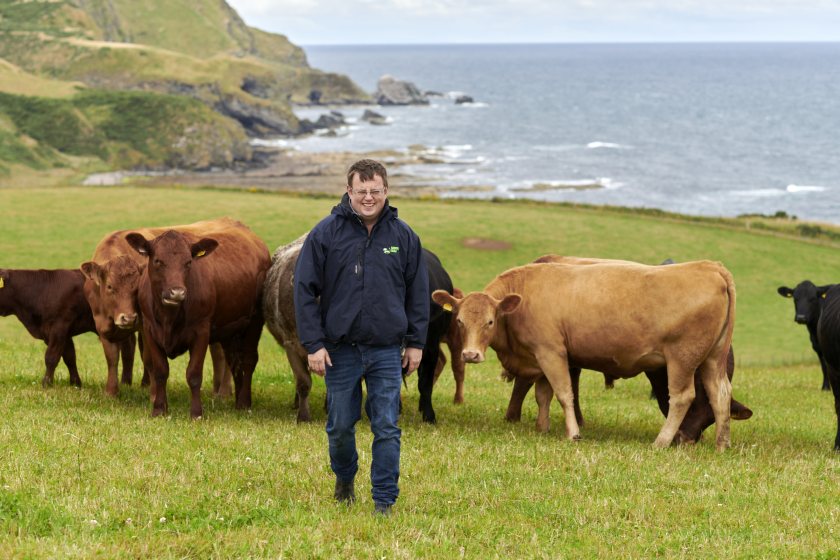
A pioneering trial in north-east Scotland is testing whether electronic rumen boluses can provide beef farmers with the same level of insight long used in the dairy sector.
Bruce Irvine, who runs Sauchentree Farm near New Aberdour with his family, has fitted 100 of his summer-calving Stabilisers with smaXtec boluses in a two-year “proof of concept” project supported by Scottish government Innovation Project funding.
The aim is to see whether the technology, already common in dairy herds, can reliably monitor health, fertility and calving in suckler cows.
Boluses sit inside the cow’s rumen and transmit data to an app, giving early warnings of illness, calving or heat detection. They record body temperature, rumination through rumen pulsation, water intake, activity and service dates.
Bruce hopes it will eventually allow him to cut down the number of physical checks during calving and identify cows needing attention more quickly.
The challenge, however, is that the system was designed for dairy cattle, where rations and routines are more consistent. “For the rumen pulses, the system expects cows to have 450–650 pulsations per minute, and when that drops, it’s usually a sign for dairy cows that they’re not getting enough forage or that the ration has changed,” Bruce explains.
“But our sucklers are not always eating the same ration – they might be eating grass or from a ring feeder… The lowest we have had is 300 per minute which has resulted in an alert.”
Signal strength has also been an issue on Sauchentree’s undulating ground. Base stations sometimes lose contact with boluses, forcing Bruce to move units and add an extra station for coverage. “If the cows are out of range, the boluses will store five days of data, but if there are 30–40 cows out of range, we have found it will take five to six days to ‘catch up’,” he says.
Despite these teething problems, he sees real potential. Each bolus costs £30 and is guaranteed for the life of the cow, with an annual £30 subscription for the app.
Bruce hopes the biggest benefit will be more accurate heat detection and service dates, helping tighten calving intervals for the Scottish Suckler Beef Support Scheme.
Vet Ewan Jamieson of Meadows Vets is providing independent assessment, while smaXtec is adjusting algorithms to better suit suckler systems.
Helen Hollingsworth from smaXtec says: “We wanted to take part in this trial to see the challenges presented by monitoring cows outside… There are definitely more challenges with outside monitoring, where the topography of the land varies, and cows can potentially spend time ‘out of range’.”
She adds that Bruce’s input has been vital: “We have already helped detect issues around calving time, while identify issues with feeding and heat detection has been working well too. We are excited to see how things progress.”
Bruce remains cautiously optimistic about the technology’s potential. “I hope it will all go in the right direction. The app is good, and I often look at it – I could spend all day looking at the data if I wanted to,” he says.
That sense of promise is echoed by Monitor Farm regional adviser Peter Beattie, who sees wider value in the trial: “This technology could give suckler producers much more information about their cows and identify potential issues earlier.
"It’s an ongoing trial on a commercial scale and will be very interesting to see how it performs. Sharing experiences and learning together is at the heart of the programme.”
